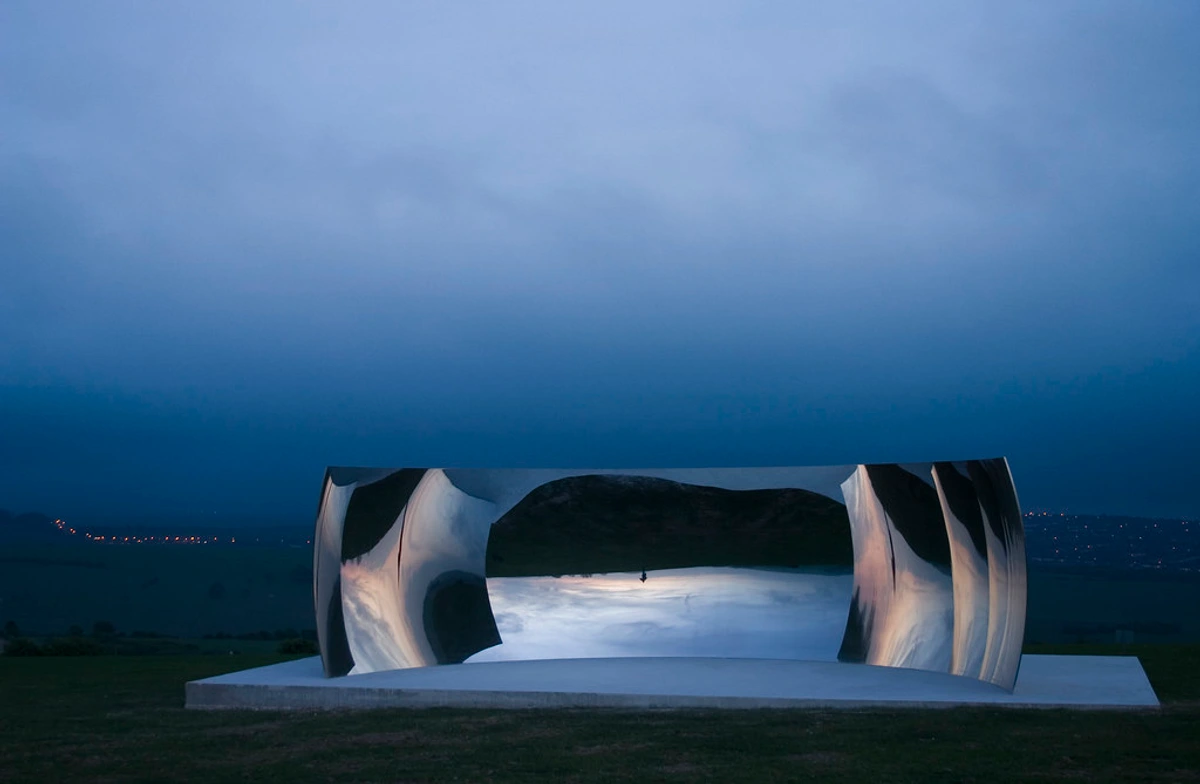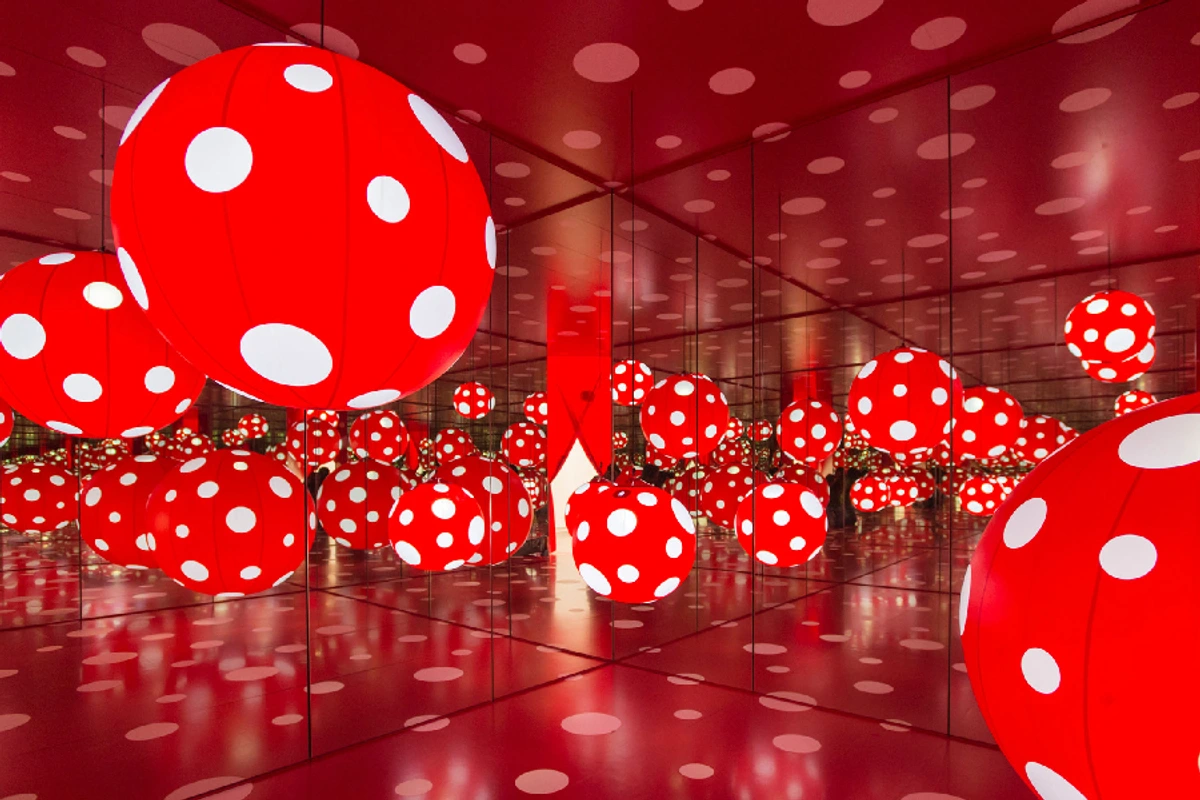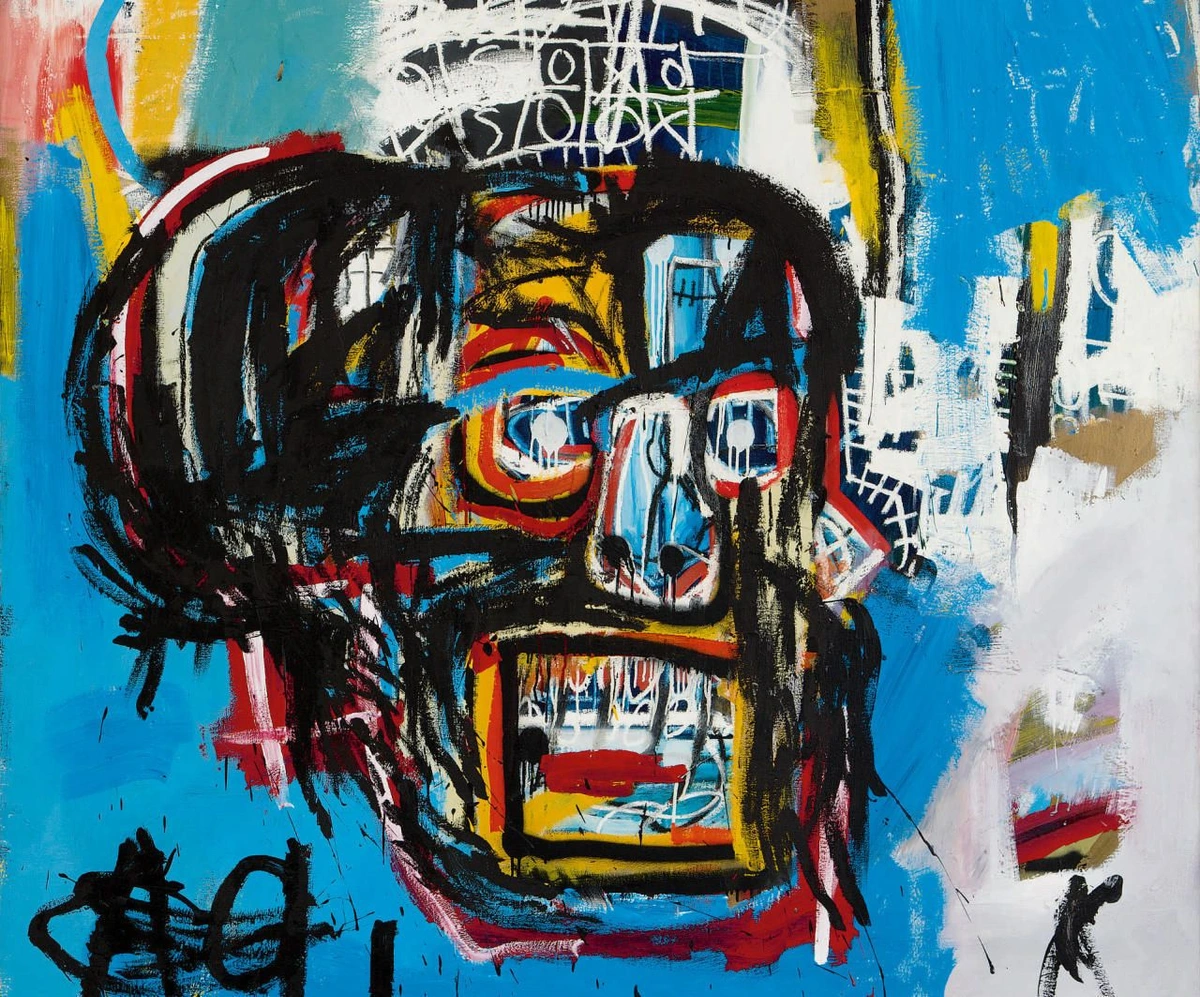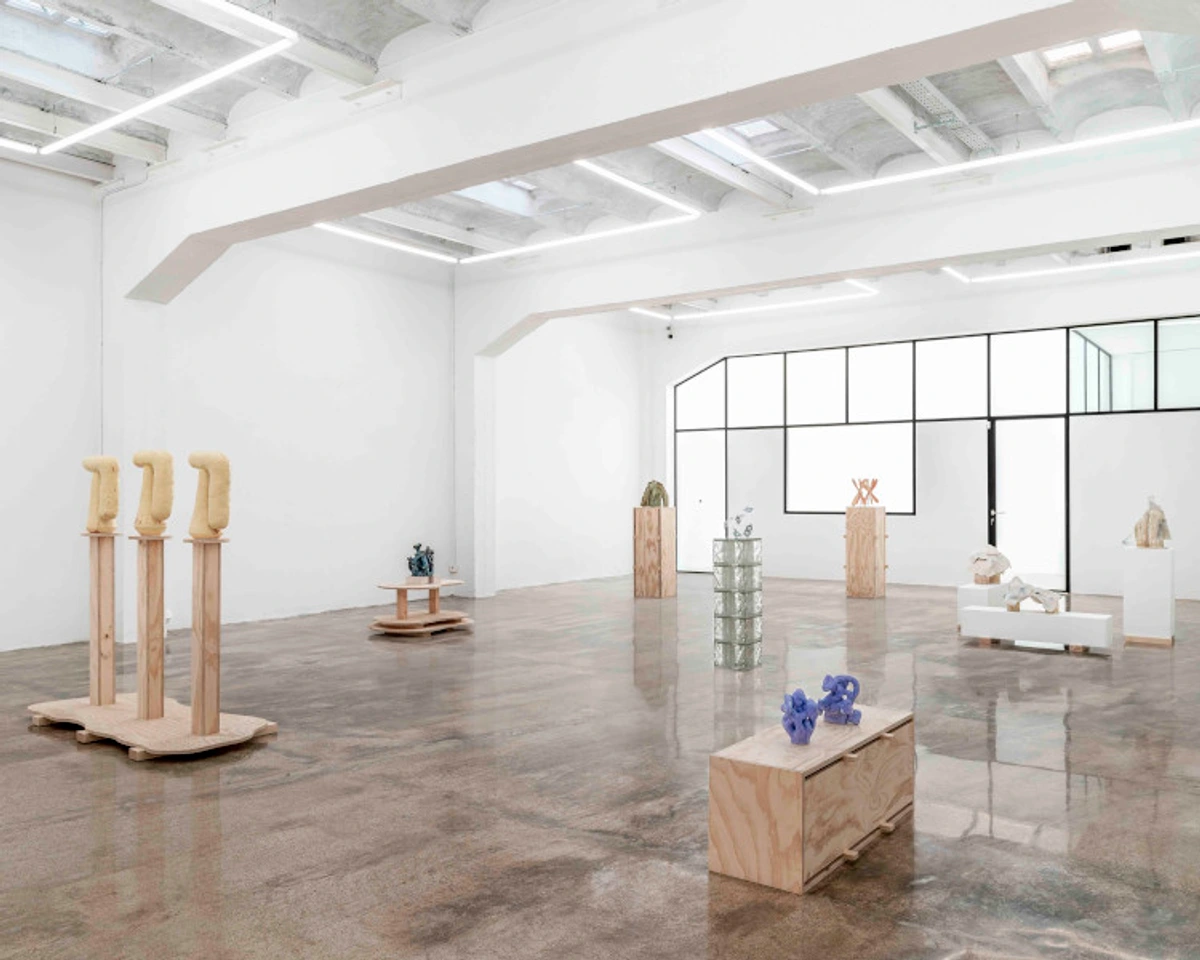
Beyond the Canvas: Abstract Sculpture & Mixed Media Art Explained
Explore abstract sculpture & mixed media beyond the canvas. Discover how these dynamic art forms redefine space, challenge perception, and enrich collections. Learn about techniques, materials, and iconic artists like Calder, Kusama, and Basquiat, and unlock a new dimension of artistic experience.
Beyond the Canvas: Exploring Abstract Sculpture and Mixed Media Art
I’ve always found myself drawn to abstraction, that wonderful, liberating space where art speaks directly to the soul without the need for literal representation. But if I’m being honest, for a long time, my world of abstract art was pretty much confined to the canvas. Paintings, glorious paintings, filled my vision.
Then, slowly, almost like a quiet whisper that turned into a persistent hum, I started to feel the conceptual walls of that canvas. It was like realizing that a conversation doesn't always have to happen face-to-face; sometimes, it thrives in a bustling market or through a shared glance across a crowded room. And then, a little 'aha!' moment: what if the conversation didn't need a room at all, but rather, created its own room? What if the artwork wasn't just on a surface, but was the space itself, or built from it? This isn't just for seasoned collectors; it's for anyone who craves a richer, more profound interaction with art.
Abstraction, I began to understand, isn't just about what you put on a surface, but what you build from it, or even what you assemble with it. It’s about redefining what a blank canvas (or space) can be. And that, my friends, is where abstract sculpture and mixed media art waltzed into my creative consciousness.
It was a bit like discovering there’s more to life than just my favorite comfy armchair. Lovely as it is, sometimes you need to get up, stretch, and maybe even dance a little. For collectors, it means expanding your vision beyond the traditional easel, embracing a world where form, texture, and space play starring roles.
When the Canvas Just Isn't Enough: Abstract Sculpture
Picture this: you’re trying to convey a feeling, say, the feeling of quiet tension, or explosive joy. On a canvas, you use color, line, and composition to evoke that. But what if you could literally carve that tension, or build that joy into something you can walk around, touch (carefully, please!), and experience from every angle? That’s the magic of abstract sculpture.
For me, the leap from two dimensions to three was initially daunting. I'm a painter, right? My brain thinks in flat planes. I remember my first attempt at a "sculptural" painting; I glued on a crumpled piece of paper, thinking, "Voilà, dimension!" It looked more like a bad accident than art, and certainly lacked any sense of structural integrity. It was a gravitational reality check.
But then I started seeing sculptures not as rigid forms, but as solidified emotions, movements frozen in time, or even conversations with the air around them. What makes a sculpture abstract? It’s when the artist moves beyond depicting recognizable objects or figures, focusing instead on pure form, shape, line, texture, and the manipulation of space. It’s about the intrinsic qualities of the materials and the way they interact, not about telling you a story you can immediately identify. And crucially, it's also about the negative space—the voids and gaps within and around the sculpture—which becomes just as integral to its form and presence as the solid material itself. Think of it like a silent dancer, shaping the air around them.
Abstract sculptors often employ diverse techniques and materials, each with its own sensory experience. Carving demands patience and precision, revealing form hidden within stone or wood. Modeling offers the tactile joy of building up, adding, shaping forms with clay or wax. Assemblage is a spontaneous dance with discarded treasures, combining found objects into new narratives, while welding clangs with the defiant energy of forging new connections between metal pieces. The choice of materials – from traditional bronze and marble to recycled plastics, light, or even sound – profoundly impacts the work.
For example, think about the organic, flowing forms of Henry Moore who carved simplified, often reclining figures, or the delicate, dancing mobiles of Alexander Calder, which introduced kinetic art (art that moves) to abstraction, transforming space with their subtle shifts. These artists, alongside movements like Cubism and Abstract Expressionism, pushed boundaries, showing that abstraction wasn't just for canvas.
Movements like Minimalism further distilled abstract sculpture to its essence, with artists like Donald Judd creating precise, often repeating geometric forms that emphasize pure volume and material, and Richard Serra crafting monumental steel sheets that redefine and interact with the physical space around them. These works challenge the viewer to engage with the sheer presence of the object rather than its narrative.
Think about the flowing curves of a Brancusi, or the piercing voids in a Barbara Hepworth piece. They don't represent a person or a tree, but they feel like a quiet meditation or a sudden, sharp exclamation. They alter the space they inhabit, forcing you to move, to consider, to feel. Sometimes, an abstract sculpture can feel like a perfectly captured moment of raw energy, like a sigh or a laugh given physical form.

Speaking of immersive experiences, consider the incredible work of Yayoi Kusama. While her art often features recognizable elements like dots or pumpkins, the repetition and overwhelming scale of these elements within her installations become truly abstract in their non-representational effect on the viewer's perception of space and reality. Her Infinity Rooms are a prime example of abstract art that transcends the traditional object, becoming an environment that speaks to a feeling, not a depiction. For more on her fascinating world, you can check out the ultimate guide to Yayoi Kusama.

This kind of art challenges us. It asks us to engage with our senses, to feel the presence of the piece rather than just 'understand' it. It’s a wonderful antidote to our constantly interpreting brains.
What happens, though, when you take that freedom of material and push it even further, beyond the singular object, into a glorious, tangled mess of combined elements? That's where mixed media steps in.
The Tangled Beauty: Abstract Mixed Media
If abstract sculpture is about pushing into the third dimension, abstract mixed media is about breaking all the rules of what materials can and should be used together. What if you could throw everything but the kitchen sink onto a canvas (or into a composition), and somehow, it all just works? I once tried to incorporate dried leaves from my garden, thinking they’d add an organic touch. They mostly just crumbled, leaving a trail of tiny green regrets.
My studio, bless its cluttered heart, often feels like a mixed-media piece itself – a collection of half-used paints, forgotten papers, and the occasional coffee stain that I almost leave in for 'texture.' The faint scent of turpentine and the satisfying crunch of discarded paper underfoot are just part of the creative chaos. Sometimes, my greatest challenge is just finding the brushes. This, I suppose, is my version of chaotic order.
But seriously, mixed media in abstract art is pure liberation. It’s about combining two or more distinct artistic mediums into a single piece. We're talking paint with collage, ink with fabric, wood with metal, or even found objects thrown into the mix. This fusion often creates new narratives and layers of meaning, allowing artists to explore complex themes, historical dialogues, or even social commentary through the very materials they choose to combine. Think of it as a conversation where each material is a different voice, adding its own tone and history to the overall message.
Historically, the seeds of mixed media were sown early in the 20th century. Pioneers like Pablo Picasso and Georges Braque introduced collage into their Cubist paintings, gluing newspaper clippings and other found items directly onto the canvas, blurring the lines between art and everyday life. The Dada movement also enthusiastically embraced assemblage and collage, using everyday objects to challenge artistic conventions. Common techniques include:
- Assemblage: creating a 3D composition from diverse objects, where disparate elements find new harmony. You can also explore what is assemblage art.
- Collage: adhering paper or other materials to a surface, building layers of meaning and texture. Learn more about collage art.
- Décollage: the opposite of collage, tearing away parts of existing images to reveal hidden histories and unexpected juxtapositions.
- Frottage: rubbing over a textured surface to create an impression, like the artwork's quiet confession of a texture it encountered.
Artists might incorporate anything from digital elements and natural objects (leaves, sand) to discarded industrial items or photographs. The beauty of it lies in the textures, the layers, the unexpected juxtapositions that arise when disparate elements meet.
Why does this resonate so deeply with me, and perhaps with you? Because life itself is a mixed-media project, isn't it? A jumble of experiences, emotions, and moments, some smooth, some jagged, all layered upon each other. A recent memory might be a jumble of vibrant colors, rough textures, and unexpected sounds, all layered upon each other, just like a bold mixed-media piece. Abstract mixed media often reflects this beautiful, sometimes messy, complexity of existence. It’s not afraid to show its seams, its history, its imperfections. In fact, those imperfections often are the art.
Consider the raw energy and layered narratives in works by artists like Jean-Michel Basquiat, whose neo-expressionist pieces often incorporate text, images, and various materials beyond just paint, creating a dense, almost archaeological surface. While his work often includes figurative elements, the way he constructs his canvases – through layering, scratching, and combining – embodies a profoundly abstract approach to material and meaning. You can delve deeper into his impactful career in our ultimate guide to Jean-Michel Basquiat.

Beyond Basquiat, there are the monumental, heavily textured works of Anselm Kiefer, who uses lead, ash, straw, and shellac alongside paint to explore themes of history, war, and myth, creating dense, evocative surfaces that feel ancient and scarred. And let's not forget Kurt Schwitters, a pioneer whose early 20th-century Merz collages and assemblages blurred the lines between art and life by incorporating found ephemera, laying the groundwork for much of what followed in mixed media. Then there are the pioneering "Combines" of Robert Rauschenberg, which blurred the lines between painting and sculpture by incorporating everyday objects into his canvases, challenging the very definition of a painting. These artists remind us that materials have their own stories to tell.

It’s a fantastic way to explore themes of chaos and order, destruction and creation, memory and forgetting. Plus, for an artist like me, it opens up a whole new playground of textures and possibilities. I might primarily paint, but the spirit of exploring mixed media in contemporary abstract art is always buzzing in the back of my mind.
The Collector's New Frontier: Why Expand Your View?
If you're a collector, or just someone who loves abstract art, stepping beyond the canvas opens up a whole new world of engagement. It’s not just about what hangs on your wall anymore; it’s about how art interacts with your space, how it creates a dialogue with the air around it, and how its textures invite you closer.
But why should you, a discerning collector, venture into these new dimensions? Here's why I think it's worth exploring:
Characteristic | Traditional 2D Paintings | Abstract Sculpture & Mixed Media Art |
|---|---|---|
| Presence | Wall-bound, focal point on a flat plane | Physical, volumetric, commands space and interaction |
| Engagement | Primarily visual, interpretive | Visual, tactile (implied), dynamic, multi-sensory |
| Interaction | Viewed from a fixed perspective | Changes with viewer's movement, reveals new angles |
| Materiality | Canvas, paint, ink, traditional mediums | Diverse, unexpected materials; layered textures |
| Collection Depth | Adds to visual narrative | Adds physical, textural, and conceptual variety |
- Unique Presence: Abstract sculptures and mixed media pieces have a physicality that paintings, by their nature, don't. An abstract sculpture, for instance, doesn't just hang; it anchors a room, defining the very air around it and becoming a focal point that pulls you in. They demand a presence that reorients the space itself.
- Tactile Engagement: You can't touch a painting (please, don't!), but the textures in mixed media, or the forms of a sculpture, often invite a visual, almost haptic, appreciation. Your eye travels over a rough metal surface or delves into the layered depths of a collage, creating a visceral sensation of touch and inviting closer inspection. You can almost feel the artist's hand.
- Dynamic Interaction: A sculpture changes as you walk around it, revealing new angles and shadows. I’ve always been fascinated by how my own sculptures, or those I admire, transform with the changing light of day, revealing entirely new facets and shadows as the hours pass. A mixed media piece offers layers to unpack, different materials catching the light in unique ways. It's an ever-unfolding experience.
- Diversify Your Collection: For serious collectors, venturing into these forms can add incredible depth and variety to your holdings. It's a sign of a well-rounded appreciation for the diverse types of artwork and the expansive nature of modern art. What's more, as unique, often one-of-a-kind physical pieces, abstract sculptures and mixed media works can represent significant investments, often appreciating in value as their conceptual depth and material innovation are increasingly recognized in the art market.
Considerations for Display & Care: Collecting these pieces also comes with unique practical considerations. Unlike a painting that might simply need a well-lit wall, an abstract sculpture needs adequate space to be appreciated from all angles, and careful attention to its stability and lighting to highlight its form and shadows. Mixed media pieces, with their diverse and often unconventional materials, might require specific humidity control, protection from dust, or even specialized conservation techniques due to the varied aging properties of their components. It's also worth noting that these unique, often one-of-a-kind pieces can represent a significant investment and may require specialized insurance policies. Always ask about maintenance, environmental recommendations, and insurance considerations when acquiring such pieces.

When I think about collectors finding their next piece, whether it's one of my abstract prints or a grand sculpture, it's about finding that connection. You can browse my abstract art for sale to see how my own brush with abstraction takes form, and maybe even find something that resonates with your evolving taste.
My Own Creative Echoes: Beyond the Canvas
Even though I mainly work with paint, the principles of abstract sculpture and mixed media deeply influence my practice. I'm constantly thinking about depth, about layering, about how different colors and strokes can create a sense of texture that almost lifts off the canvas. I often use thick impasto to create a sculptural relief, or layer washes and glazes to mimic the depth and history of a mixed media piece. One of my current series, for instance, uses heavily textured gesso underlayers combined with layered acrylic washes, creating a surface that feels almost geological, as if it could be chipped away to reveal deeper strata – a painting aspiring to be a rock formation. My aim with these pieces is to convey the feeling of the earth's ancient layers, or the gradual erosion of time, even on a flat surface. It's like my paintings are always aspiring to be a little more sculptural, a little more physical. This constant cross-pollination of ideas ensures my work remains fresh, challenging, and ever-evolving.
My creative process often involves building up layers, scraping them back, and adding new elements, which, in a way, is a form of mixed media, even if it's all paint. I'm fascinated by how the history of a piece – the hidden layers, the visible reworkings – can tell its own abstract story. It's probably why I appreciate the journey as much as the destination, much like looking back at my artist's timeline.
If you ever get the chance to visit my museum in 's-Hertogenbosch, you’ll see how I try to make the flat surface sing with dimension, always pushing the boundaries of what paint alone can do.
FAQs: Navigating the Abstract Beyond the Brush
Stepping into the world of abstract sculpture and mixed media can bring up some interesting questions. Here are a few I often encounter:
Q: What's the fundamental difference between abstract sculpture and figurative sculpture?
A: Figurative sculpture aims to represent recognizable objects, people, or animals, even if stylized. Abstract sculpture, on the other hand, focuses on form, shape, and material for their own sake, often exploring emotions, concepts, or pure aesthetic principles without direct reference to the visual world. It's less about 'what is it?' and more about 'what does it feel like?' Figurative is like a clear portrait; abstract is more like a powerful symphony – both are profoundly expressive, but they communicate in different, equally valid languages. If you're curious about what makes abstract art compelling in general, that article dives deeper into the emotional language of non-representational forms.
Q: How do you display abstract mixed media art?
A: Displaying mixed media depends entirely on the piece! Some are wall-mounted, like paintings, but their dimensionality means you need to consider lighting to highlight textures and shadows. For wall-mounted mixed media, also consider the background wall color; it can dramatically alter how the piece's varied elements 'pop' or recede. Others might be freestanding, requiring a plinth or a dedicated space. The key is to allow the piece enough room to breathe and for its various elements to be appreciated without distraction. It's about letting the art be the star, much like finding the perfect frame for a cherished photograph.
Q: Is abstract sculpture 'art' if it doesn't look like anything?
A: This question always makes me smile, because it gets to the heart of how we define art! Yes, absolutely. Art isn't just about imitation; it's about expression, innovation, and provoking thought or emotion. Abstract sculpture communicates through its form, material, and how it interacts with space. Just like a piece of music doesn't 'look like' anything but can evoke profound feelings, abstract sculpture speaks in a non-verbal language. It's a different dialect of artistic language, one that speaks directly to our subconscious, our emotions, and our innate human capacity to find meaning in pure form. For a deeper dive into what is art and its elements, check out those articles.
Q: How do I care for and maintain abstract sculptures and mixed media pieces?
A: The care largely depends on the materials used. Generally, keep them away from direct sunlight, extreme temperature fluctuations, and high humidity, which can damage delicate materials. Dust regularly with a soft brush or cloth. For mixed media, be particularly gentle with adhered elements. And perhaps a gentle word of caution: if you have curious pets or adventurous small children, consider the placement of freestanding sculptures carefully. My cat once decided a delicate mobile was a new toy, with rather kinetic (and destructive) results! If a piece has very specific or fragile components, always consult with a professional conservator or inquire with the artist/gallery about specific care instructions. Think of it as caring for a cherished, unique treasure – each piece has its own needs.
Q: How does experiencing abstract sculpture and mixed media differ from 2D paintings?
A: The difference is truly multi-sensory and dynamic. While paintings are primarily visual and invite interpretation from a fixed viewpoint, abstract sculpture and mixed media demand a more physical engagement. You're invited to move around a sculpture, experiencing its shifting forms and shadows from every angle, feeling its presence in the room. Mixed media often invites a visual 'touch,' where your eyes explore varied textures and layered materials, creating a deeper, more visceral connection. It's less about observing a flat image and more about interacting with a physical entity, allowing the art to transform your perception of the space and yourself within it.
Q: Where can I find or acquire abstract sculpture and mixed media art?
A: There are many excellent avenues for discovering and acquiring these unique art forms. Reputable art galleries often specialize in contemporary sculpture or mixed media, offering curated selections and expert advice. Major international art fairs are fantastic places to see a wide range of works from different artists and galleries under one roof. Online art platforms and auction houses also provide access to a global market. Additionally, many artists, like myself, offer works directly from their studios or websites, allowing for a more personal connection with the creator. When considering a purchase, always ensure authenticity and inquire about provenance.
Q: Can I try making abstract mixed media art myself?
A: Oh, please do! It’s incredibly liberating. Start small with found objects, bits of fabric, paper, and whatever paints or glues you have. Start with things you already have around the house – old newspapers, discarded bottle caps, natural elements like twigs or pebbles. You'll be amazed what unexpected harmonies can emerge. There are no rules, no 'right' way. It’s all about experimentation and letting the materials guide you. If you want some tips on how to abstract art in general, that's a great starting point for unleashing your inner artist.
A Final Thought: The Endless Language of Abstraction
My journey with abstract art has been one of constant discovery, a peeling back of layers, much like an abstract mixed media piece itself. From the flat canvas, I've seen the world of abstraction expand into the tangible space of sculpture and the rich, complex tapestry of mixed media. It’s a testament to the fact that art, true art, knows no boundaries, no fixed definitions. It simply is, in whatever form it chooses to manifest.
For artists, it's an invitation to boundless creativity. For collectors, it's an opportunity to engage with art in new, exciting ways, to feel it, to walk around it, to dive into its textures. So, next time you think of abstract art, I urge you to seek out and experience a sculpture or a mixed media piece in person. You might just find a whole new dimension waiting for you, eager to challenge and inspire.




